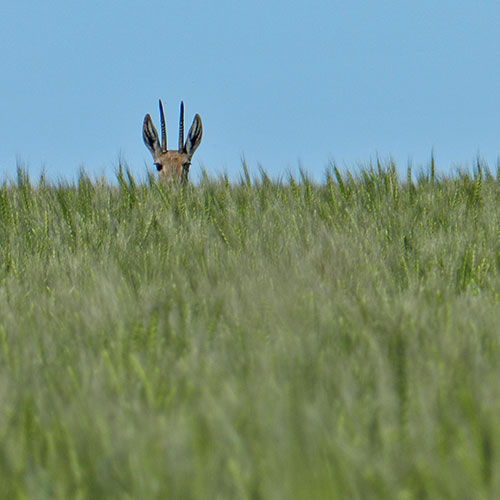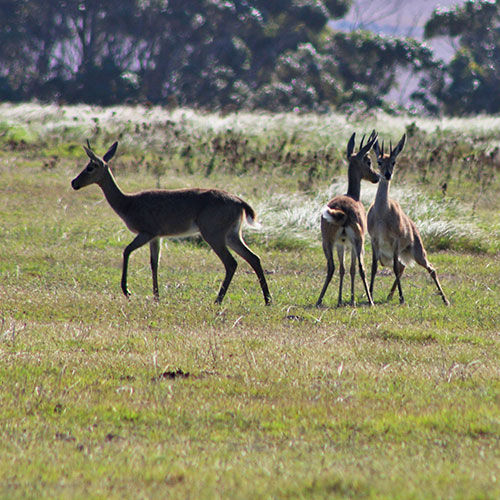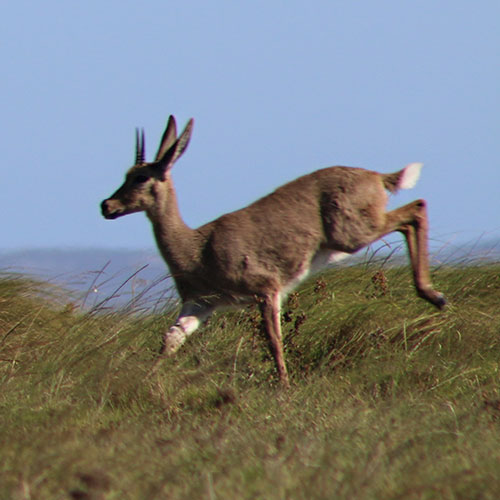

Grey Rhebok (Pelea capreolus) became famous globally for a most surprising reason. (That’s after a British runner won a dictionary at a race during the war, and randomly selected a word from the dictionary – Reebok – which he then called his sporting brand).
Instead Grey Rhebok should be famous for another reason: They’re one of the few free-roaming antelope remaining today. They’re nimble and can slip between narrow fence wires. They’re also incredibly strong and can jump over game fences if they need to.
And there’s one more reason we should put the spotlight on the Grey Rhebok (especially this Endangered Species Day): Because conservationists are becoming increasingly concerned about their declining numbers.
So much so that they’ve been listed Near Threatened on the IUCN Red List – and are on a watch list to be moved to Vulnerable if things don’t improve.
In the Nuwejaars Wetlands Special Management Area: We currently have a number of healthy subpopulations of Grey Rhebok.
They generally move across our farms in smallish herds. Or they live as single (or small herds of) male Rhebok who have been pushed out of the group.
What the Nuwejaars Wetlands SMA offers these antelope are connected natural corridors that they can move between, made up of habitat that they prefer.
That’s not the case across all of South Africa and beyond. Grey Rhebok are native to Lesotho, South Africa and Swaziland – and used to roam free in large numbers. But a number of factors have caused estimated population declines of around 20% since 1999.
Conservationists point to these threats:
- Their natural habitat is shrinking.
- Poaching for meat (also using snares) is a big problem across the country.
- Feral dogs are known to catch Grey Rhebok (in the Bontebok National Park a few years ago, eight buck were killed by a pack of dogs).
- Illegal hunting using dogs (often for sport) is common in other areas of South Africa.
- And natural predators are known to catch them.




What can be done to protect them?
- Habitat must be well-managed, in a way that prevents unplanned fires and overgrazing.
- Awareness-raising is essential to landowners and community members, to show the conservation significance of the Rhebok.
- Numbers should be monitored where possible, to spot worrying trends early.
What’s more, one of the best things you could do is to form a Special Management Area or conservancy. This gives Rhebok large areas of well-managed habitat to move around in, with reduced threats of poaching, allowing them to complete their natural system of breeding and gene distribution.
Our corridor system
The NWSMA is continuing to ensure our corridor system is a focus area for us – which will bring many benefits to our biodiversity conservation drive. This system provides the Rhebok with more space to move. This is very important also to protect the young replacement rams from persecution by the dominant males (the dominant rams chase the younger rams away from their herd). It also provides opportunities to spread valuable genetic diversity over a greater area, resulting in a healthy, vibrant population.
Images: LoveGreen Communications
